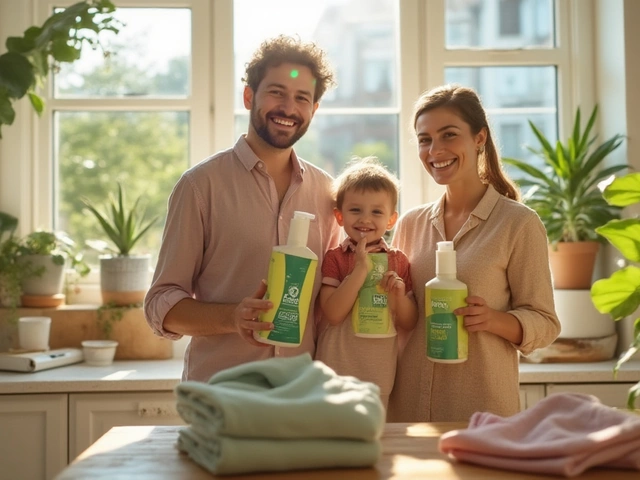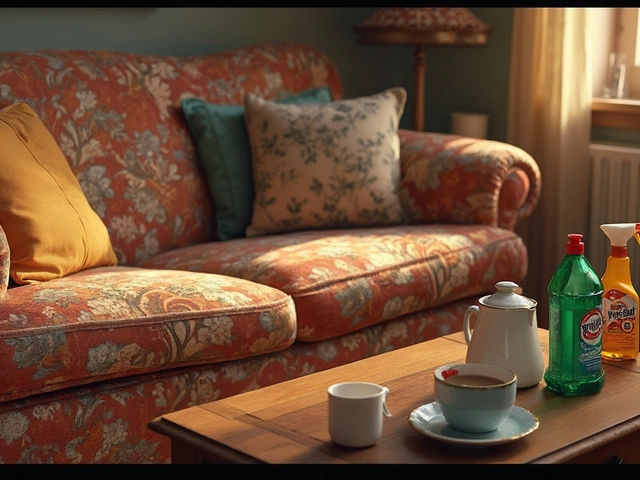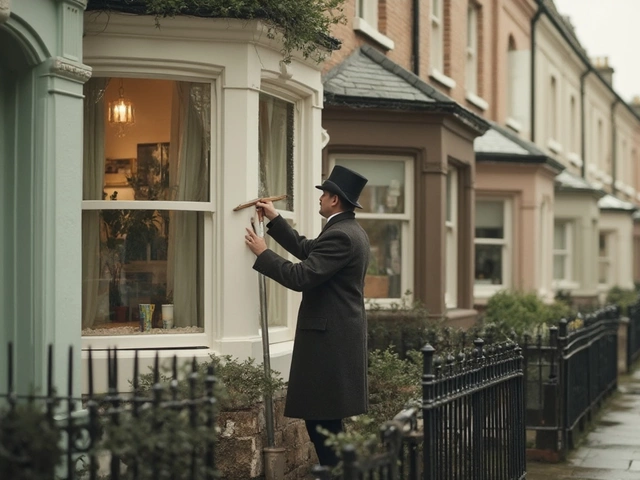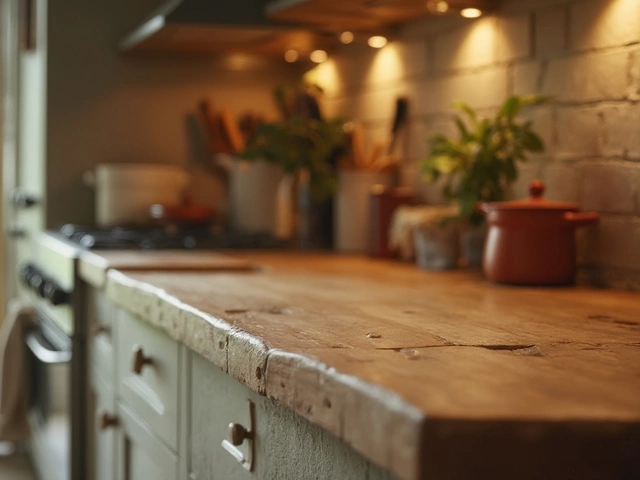Window Cleaning Solution Calculator
Enter values and click calculate to see ingredient amounts
Pro Tip
For best results, always use distilled water and white vinegar in a 1:1 ratio. This combination effectively removes grime and prevents streaks.
Ever stare at a sunny pane and see a web of smudges that just won’t quit? You’re not alone-most homeowners wrestle with stubborn streaks that make even a brand‑new window look dull. The good news? There is a best way to clean windows without streaking, and it doesn’t require a professional crew or pricey chemicals. Below you’ll discover the science behind streaks, the exact tools you need, a simple homemade solution, and a step‑by‑step routine that guarantees crystal‑clear glass every time.
Why Do Streaks Appear? The Science Behind a Cloudy Pane
Understanding the problem makes the fix easier. Streaks form when cleaning solution evaporates too quickly, leaving mineral deposits or soap residue behind. Hard water, especially common in the UK, contains calcium and magnesium that turn into tiny spots as water dries. Likewise, using a rough cloth can rub dirt into the glass, scattering particles that catch light and look like streaks.
Key factors that cause streaks:
- High mineral content in tap water.
- Over‑saturation of soap or detergent.
- Dirty cleaning tools that re‑deposit grime.
- Sunny, hot conditions that speed up evaporation.
By tackling each factor, you can eliminate the root cause and enjoy spotless windows year‑round.
Essential Tools for Streak‑Free Results
Before you mix any solution, gather the right gear. These items are the backbone of a flawless finish and each is marked up with schema.org microdata for easy reference.
Squeegee - a rubber‑edged tool that pulls liquid across the glass in one smooth motion, preventing excess water from dripping.
Microfiber cloth - ultra‑soft, low‑lint fabric that lifts dust without scratching.
Distilled water - free of minerals, it eliminates the hard‑water spots that tap water leaves behind.
White vinegar - a mild acid that cuts grease and neutralises mineral buildup.
Spray bottle - allows even distribution of your cleaning solution.
Optional but handy: a rubber‑gloved hand for extra grip, and a small squeegee brush to clear the rubber edge of excess water.
DIY Streak‑Free Window Cleaner Recipe
Commercial cleaners often contain ammonia or surfactants that can leave a film. A simple mix of distilled water and vinegar does the job for most windows and is safe on frames and seals.
- Combine 1 cup of distilled water with 1 cup of white vinegar in a clean spray bottle.
- Add 1 tablespoon of rubbing alcohol (optional) to speed drying.
- Shake gently to blend. Label the bottle for future use.
This solution has a pH around 2.5, low enough to dissolve grime but mild enough not to damage glass. It also evaporates quickly, reducing the window‑time window for streak formation.
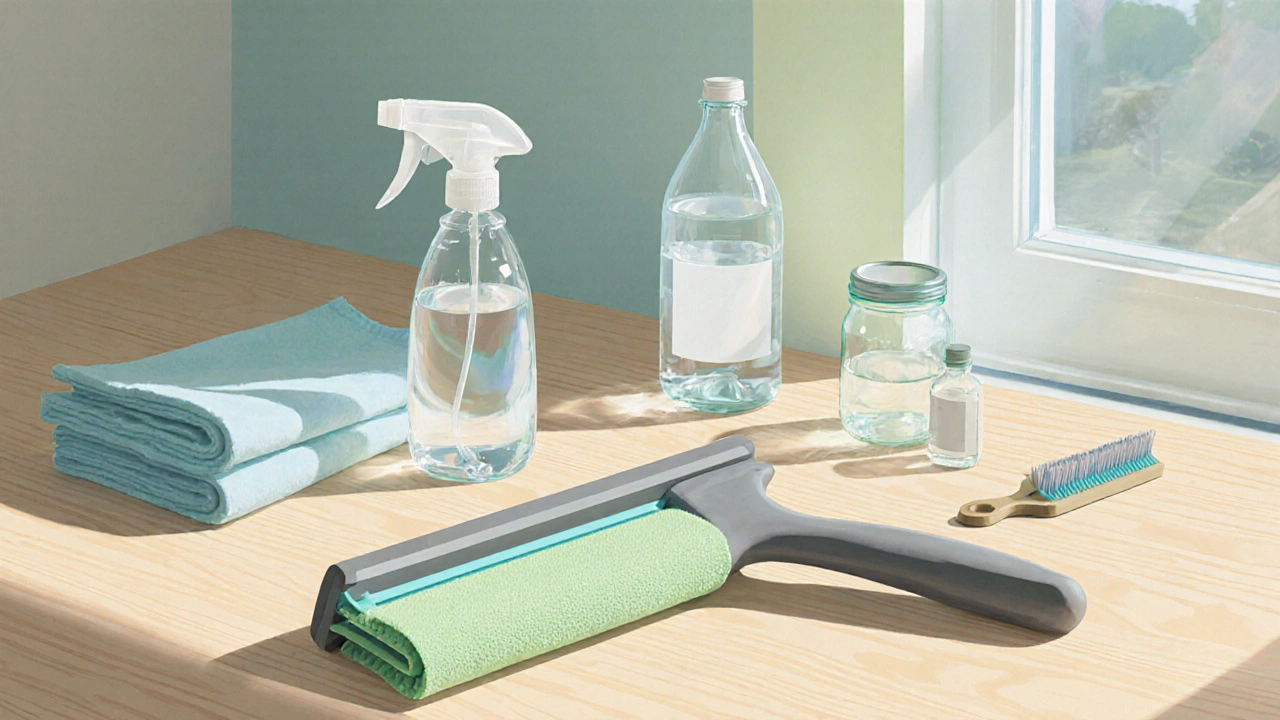
Step‑by‑Step Streak‑Free Cleaning Process
Follow these precise steps to ensure every pane gets the same spotless finish.
- Dust the surface. Use a dry microfiber cloth to wipe away dust, cobwebs, and loose debris. This prevents gritty particles from scratching the glass during the wet stage.
- Apply the solution. Lightly mist the entire surface. Avoid soaking the frame - excess moisture can seep into wood or aluminum and cause damage.
- Scrub gently. If you notice stubborn spots, glide a second microfiber cloth in a circular motion. For oily fingerprints, give the area extra vinegar spray and let it sit 30 seconds.
- Use the squeegee. Start at the top corner, pull the squeegee horizontally across the pane, then wipe the rubber edge with the squeegee brush after each pass. Overlap each stroke by about 2 inches to avoid lines.
- Dry the edges. Run a clean, dry microfiber cloth along the frame and corners to catch any drips.
- Inspect in daylight. Walk around, looking at the glass from different angles. If you spot a faint line, repeat the squeegee pass using a dry cloth on the rubber edge for a final polish.
Tip: Perform the cleaning on an overcast day or in the early morning to prevent the solution from drying too fast.
Pro Tips to Keep Streaks at Bay
Even seasoned cleaners can fall into bad habits. Here are three insider tricks that most DIY guides overlook.
- Use a “wet‑on‑wet” approach. Instead of rinsing with plain water, apply a second light mist of distilled water after the first pass. This dilutes any remaining soap and helps the squeegee glide smoother.
- Keep the squeegee blade clean. A dirty blade re‑deposits grime. Wipe it with a damp cloth before each pane, especially when working on multiple windows.
- Store cloths flat. Folding microfiber can create creases that trap lint. Lay them flat in a drawer or hang them on a hook.
Comparison of Popular Window‑Cleaning Methods
| Method | Cost (per 5L) | Streak‑Free Rating (1‑5) | Ease of Use | Best For |
|---|---|---|---|---|
| DIY Vinegar‑Distilled Water | £3 | 5 | Easy | All residential windows |
| Commercial Ammonia Cleaner | £6 | 3 | Moderate | Heavy‑duty grime |
| Newspaper & Water | Free (if recycled) | 2 | Tricky | Quick touch‑ups |
| Steam Cleaner | £120 (equipment) | 4 | Advanced | Large glass surfaces |
The DIY vinegar mix tops the chart for streak‑free results while staying wallet‑friendly. Commercial ammonia cleaners can leave a faint film unless thoroughly rinsed, and newspaper can imprint ink if not completely dry.
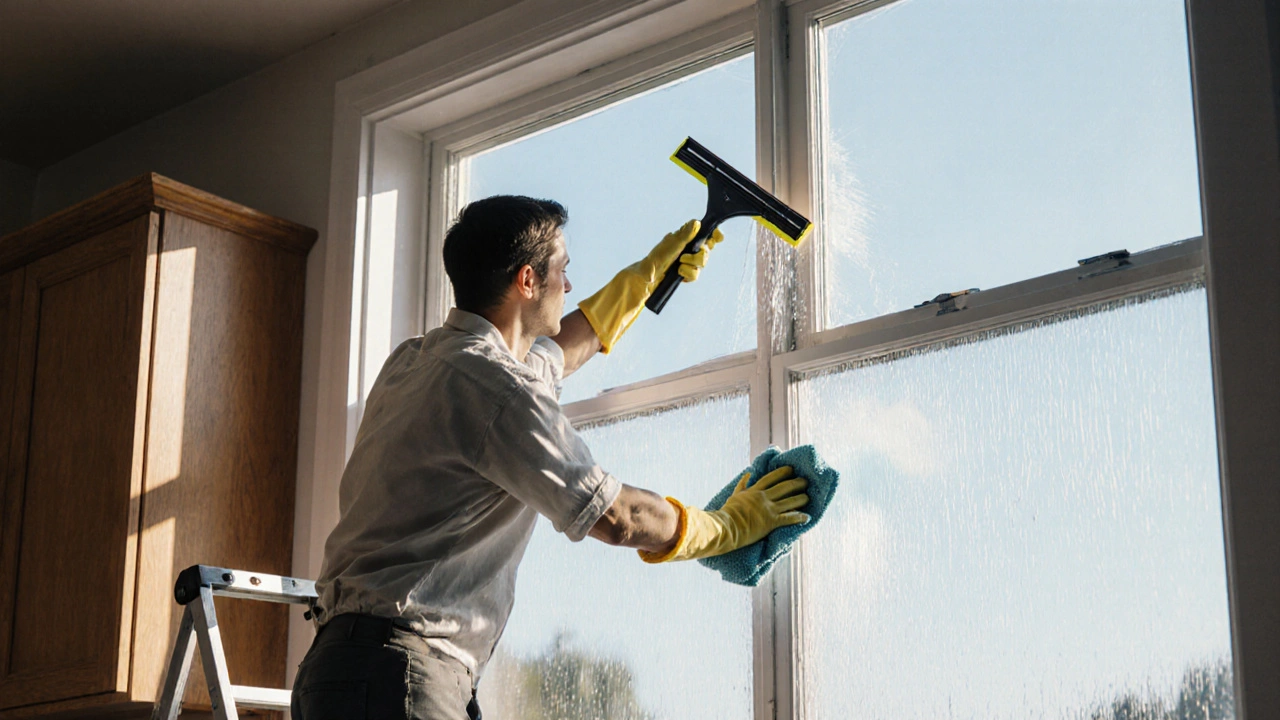
Common Mistakes and How to Fix Them
Even with the right tools, a few slip‑ups can ruin the finish.
- Using tap water. Hard‑water spots appear as tiny lines. Switch to distilled water or add a water‑softening cartridge to your spray bottle.
- Cleaning in direct sunlight. The solution evaporates too fast, leaving residue. Move the ladder to a shaded spot or clean at dawn.
- Over‑saturating the glass. Excess liquid runs down frames and creates drips. Light, even misting is sufficient.
- Skipping the dry‑edge wipe. A wet rubber blade spreads water back across the pane. Use a dry cloth on the blade after each stroke.
If you spot a streak after finishing, spray a thin mist of distilled water and run the squeegee over the area again, then wipe the edge dry.
Quick Streak‑Free Checklist
- Dust the glass first.
- Use distilled water + vinegar solution.
- Apply a light mist, not a soak.
- Pull the squeegee horizontally, overlap strokes.
- Wipe the blade after each pass.
- Dry frame edges with a clean microfiber.
- Inspect in natural light, repeat if needed.
Frequently Asked Questions
Can I use regular tap water instead of distilled?
Tap water works in areas with soft water, but in most UK locations it leaves mineral streaks. Distilled water eliminates that risk and costs just a few pounds.
Is vinegar safe for tinted or low‑E windows?
Yes. A 1:1 vinegar‑water mix is mild enough for tinted, low‑E, and double‑glazed panes. Avoid abrasive pads that could scratch the coating.
Why does a squeegee sometimes leave lines?
Lines appear when the rubber edge is dirty or when strokes aren’t overlapped. Clean the blade frequently and pull the squeegee in a single, smooth direction.
Can I use newspaper instead of microfiber?
Newspaper can work for a quick polish, but the ink may transfer onto the glass and it doesn’t absorb water as well as microfiber. For a guaranteed streak‑free finish, stick with a high‑quality microfiber cloth.
How often should I clean my windows?
In the UK, a quarterly clean keeps grime and pollen at bay. If you live near the coast or a busy road, consider a monthly routine.
Armed with the right solution, tools, and technique, you can finally say goodbye to those pesky streaks and enjoy pristine windows that let the sunshine in-no professional service required.

